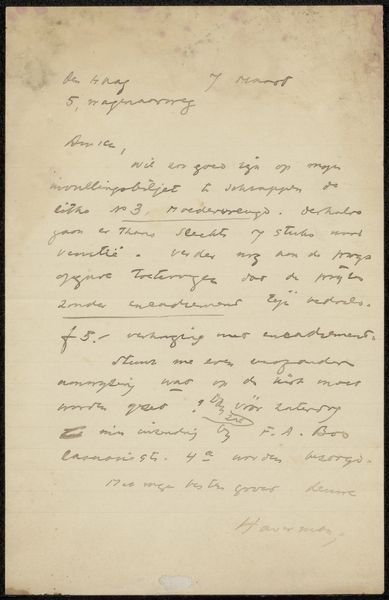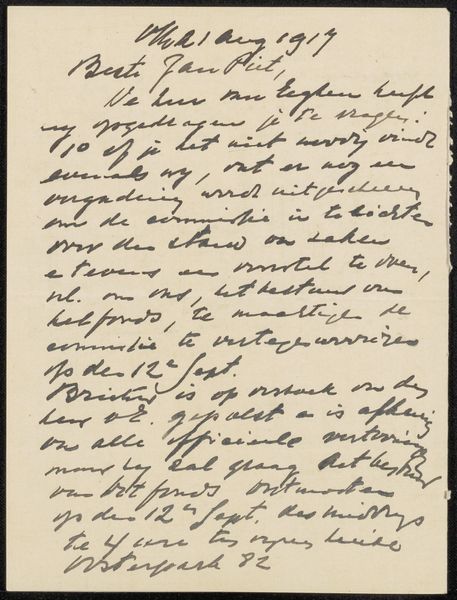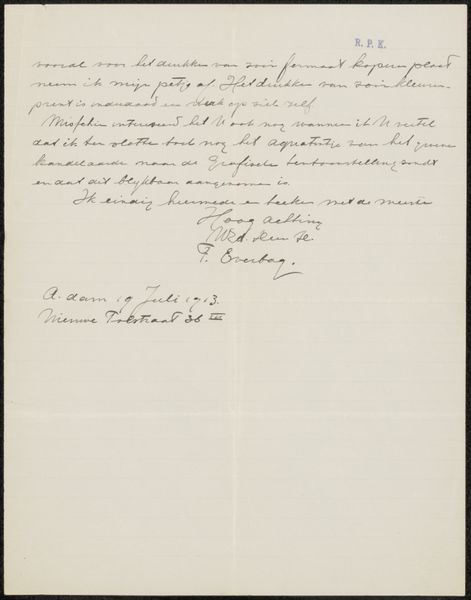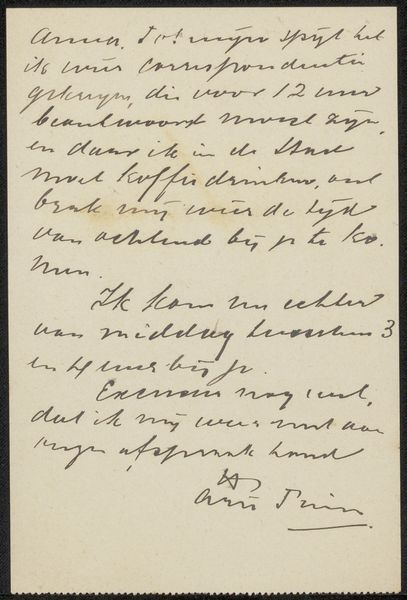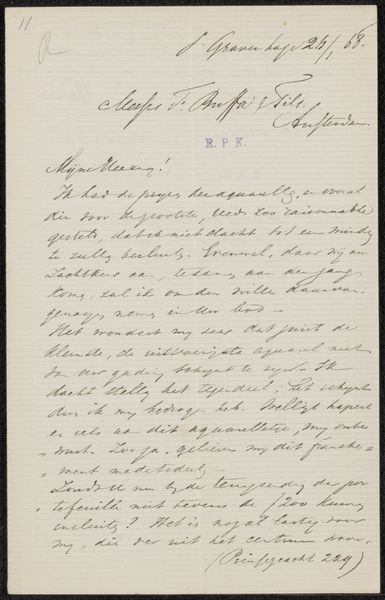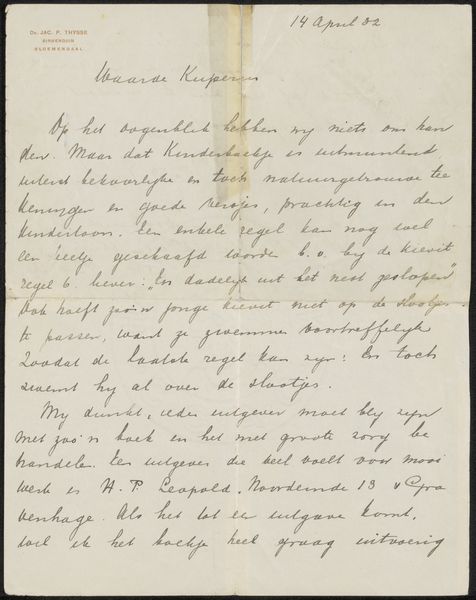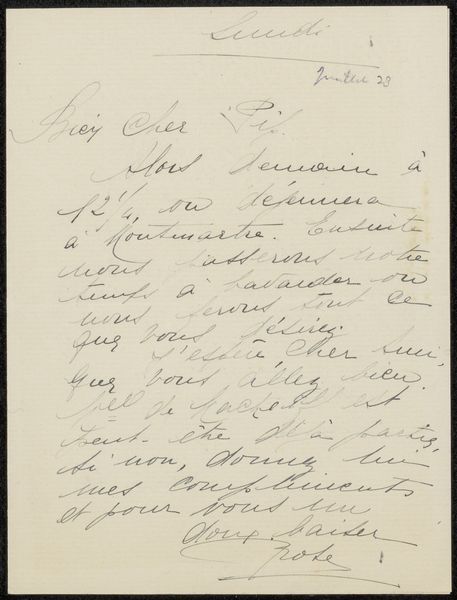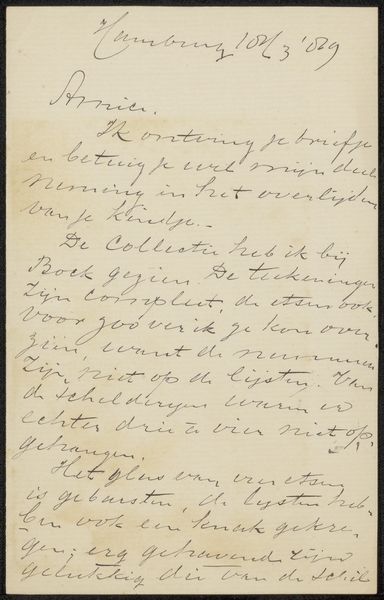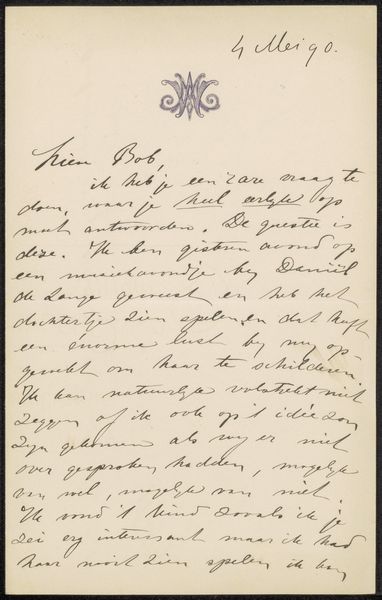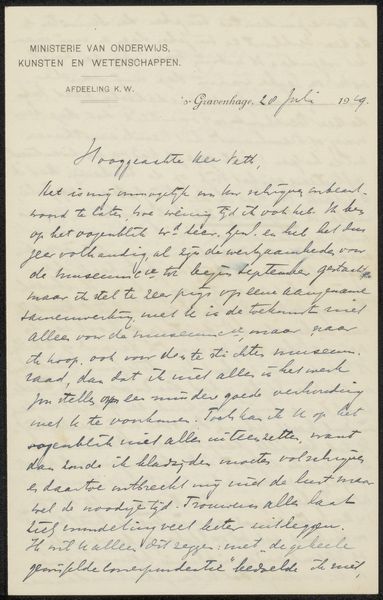
drawing, paper, ink
#
drawing
#
dutch-golden-age
#
paper
#
ink
Copyright: Rijks Museum: Open Domain
Curator: Here we have a letter, potentially from 1872, titled "Brief aan Frans Buffa en Zonen" – or, "Letter to Frans Buffa and Sons" – rendered in ink on paper by Willem Maris. What are your immediate thoughts? Editor: My first impression is the intimacy of this handwritten note. It feels very personal, very direct. There’s a vulnerability inherent in putting one’s thoughts to paper like this. It makes me wonder about the relationship between Maris and Frans Buffa. Curator: Indeed. The medium itself, ink on paper, speaks to a particular era, one prior to widespread typewriters and certainly email. It indicates a specific mode of communication reliant on skilled penmanship and the physical production of a text. It brings up questions regarding access to such skills and the social standing necessary to engage in this kind of correspondence. Editor: Right, who had the luxury of time and literacy? And what sort of relationship warranted such personal communication? Was it business? Friendship? The letter itself becomes a material object holding social information beyond just the words. I notice what appears to be the repeated mark "R.P.K.", what does that signify, if anything? Curator: That is a mark of authenticity from the Rijksprentenkabinet or National Print Room, it helps guarantee the history of this document and further secures its role as something culturally meaningful. Notice also the almost casual yet careful rendering of the script. It hints at a level of practiced skill. This suggests that penmanship was not just a means of conveying information, but also an aesthetic practice tied to notions of class and education. Editor: Absolutely. And if we consider the content – a letter intended for "Frans Buffa and Sons", a prominent art dealership at the time – it places this object within a very specific network of artistic production, patronage, and exchange. Whose stories are included here, and equally as important, whose stories are implicitly excluded? Curator: Precisely. It’s easy to overlook the physical aspects of these types of drawings as unimportant or merely utilitarian, however that material reality of the piece informs so much about its original moment. The letter represents labor of a very direct kind, unlike painting which always had some detachment afforded to its maker. Editor: Considering how many more layers are peeled back just by seeing an artwork from a critical perspective, this small letter on paper now feels far bigger than before. Curator: I completely agree. There's so much contained in this unassuming artifact, bridging the artistic process, historical moment, and labor considerations, creating a dialogue beyond just a personal message.
Comments
No comments
Be the first to comment and join the conversation on the ultimate creative platform.
